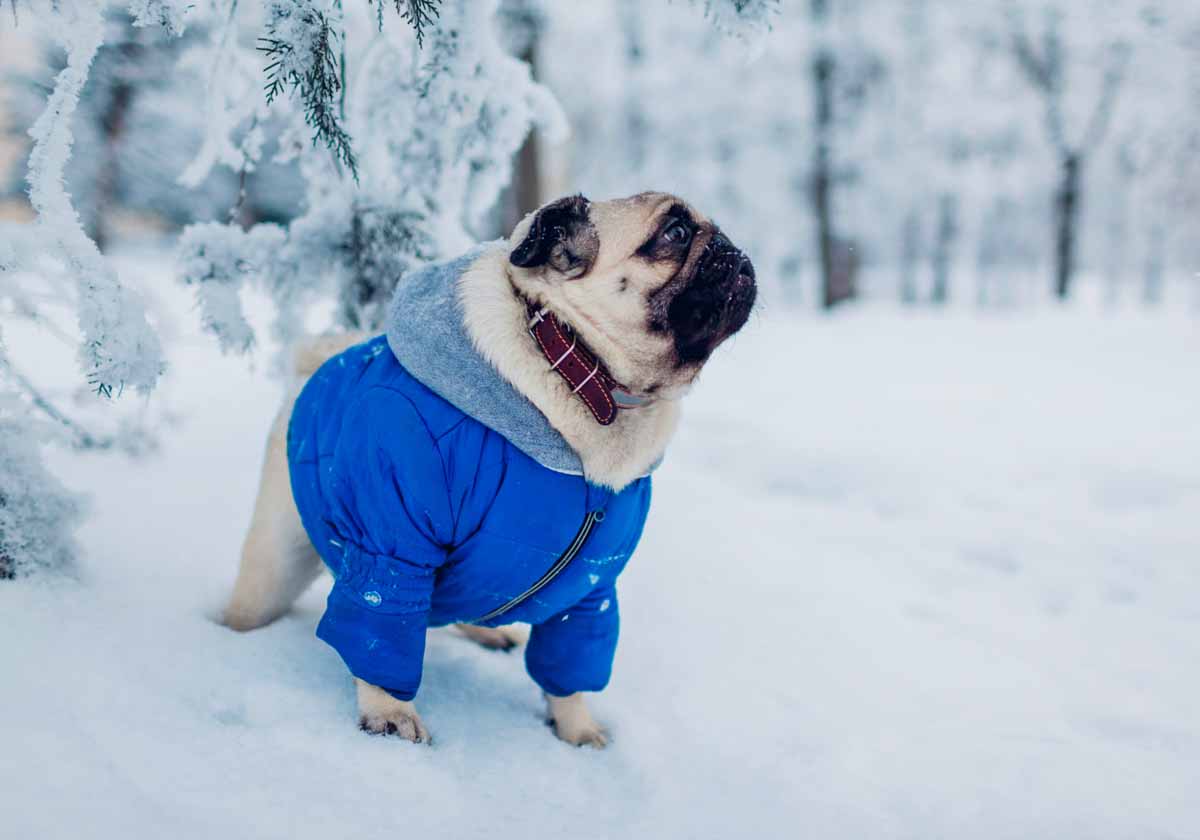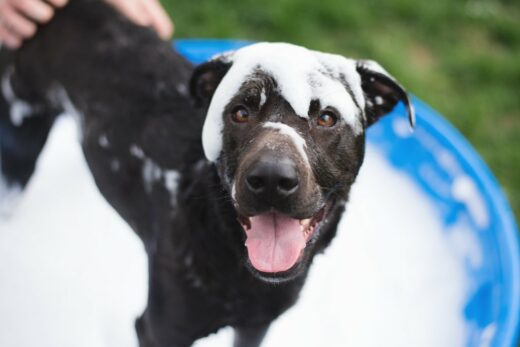
Snow, ice, wild winds, and freezing temperatures. Unless you live in warm or tropical climates, you’re probably familiar with the more challenging elements of winter weather. During the coldest months, it would be unthinkable to venture outside without an extra layer or two to keep us warm – and many of the more fair-weather folks among us may end up limiting exposure to the outside altogether when the mercury is in the lowest digits. Why should it be any different for our pets? Just because your dog is wearing a fur coat at all times, this doesn’t automatically protect them from the discomfort and even danger of extreme winter weather. At this time of year, dog owners need to take extra care and consideration with how and when they exercise a dog outdoors.
Naturally, multiple factors affect your winter dog care plan. The spectrum of dog breeds is so wide and varied that there isn’t a one-size-fit-alls approach to winter care. Size, age, body fat, and coat type all play a factor in cold tolerance, as well as mobility and exercise needs. Similarly, dog owners in the city and the countryside have different cold-weather challenges to confront on their daily dog walks. Think about your dog’s physical traits and habits and even consult with your vet about the best approach to keeping them healthy and happy during winter.
How Cold Is Too Cold?
As previously mentioned, health, breed, and age play an important role, while wet weather and wind chill can vastly impact your dog’s cold tolerance. According to PetMD, most dogs will be comfortable down to 45F (7C), at which point certain individuals may begin to feel discomfort. Once the temperatures dip to 32F (0C), thin-coated dogs, smaller breeds, and old, young, or sick animals will not be able to endure long periods outdoors without risk. At 20C (-7C) or below, cold-related health conditions become a real threat to all but the very hardiest breeds. If you notice your dog shivering hard, whining, or attempting to burrow while outside, it’s time to bring them in from the elements. As a general rule, if it’s too cold for you to stay outside for an extended period, it’s too cold for your dog too!
The dangers to dogs left in cars during hot summer weather have been drummed into the collective conscience over time, but did you know that cold temperatures can be just as dangerous? The vehicle creates a refrigerator effect that retains the cold and can be fatal if a dog is left unattended over time.
Dog Breeds and Winter Conditions
One of the most significant factors in your dog’s tolerance to winter conditions is its breed, which can influence the characteristics of the coat, paws, and extremities. Given the long history of canine domestication and the vast reach of domesticated dogs across diverse human cultures, certain breeds have evolved to adapt to specific environments. Naturally, northern breeds will be better suited to winter conditions than those from more temperate climes. Many of these dogs were traditionally selected to guard livestock on mountainside slopes, herding, hunting, and hauling sleds in high-altitude or snowy landscapes like Alaska, Siberia, or Tibet. As a result, the majority of these breeds have developed a “double coat” to provide insulation from extreme temperatures.
If a dog appears particularly fluffy, they likely have a dense, woolly undercoat topped with longer “guard hairs” designed to repel water. Breeds include huskies, Bernese Mountain Dogs, Great Pyrenees, Newfoundlands, Malamutes, and Australian Sheepdogs (double coats also help insulate against extreme heat). A particular advantage for enduring winter weather, these coats also require careful grooming to avoid matting; however, double-coated dogs should never be shaved during the warmer months. The double coat provides cooing insulation and does not benefit from a summer cut.
Other dog breeds designed to tolerate the cold include Akitas, Siba Inu, Tibetan Mastiffs, German Shepherds, Chow Chows, Anatolian Shepherds, and American Eskimo Dogs. In addition to large body mass and thick, insulating coats that resist soaking, these northern breeds benefit from wide paws to help traverse snow and ice and thick, furry ears.
While there are traits that make a dog well-suited to harsh winters, other breeds will suffer more as the mercury drops. Short and thin-coated breeds like pit bulls, bulldogs, and Dalmatians have little insulation to protect them from the elements. Size and body mass also plays a role, meaning breeds like greyhounds, whippets, and Chihuahuas are particularly vulnerable and will begin to shiver at even a slight chill.





